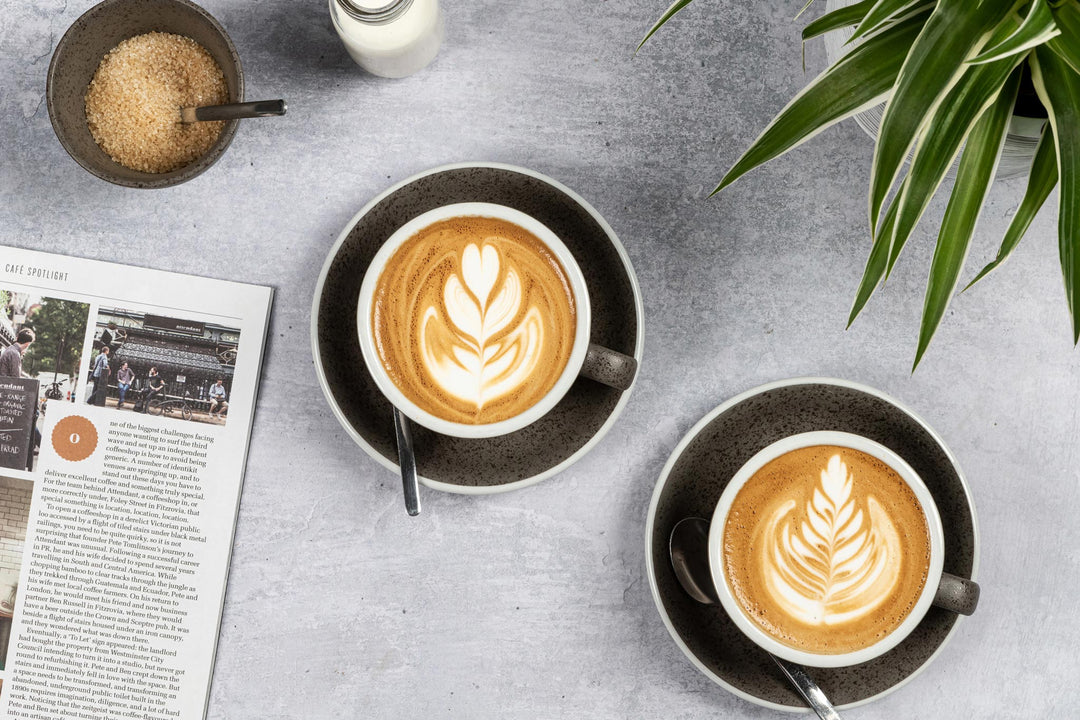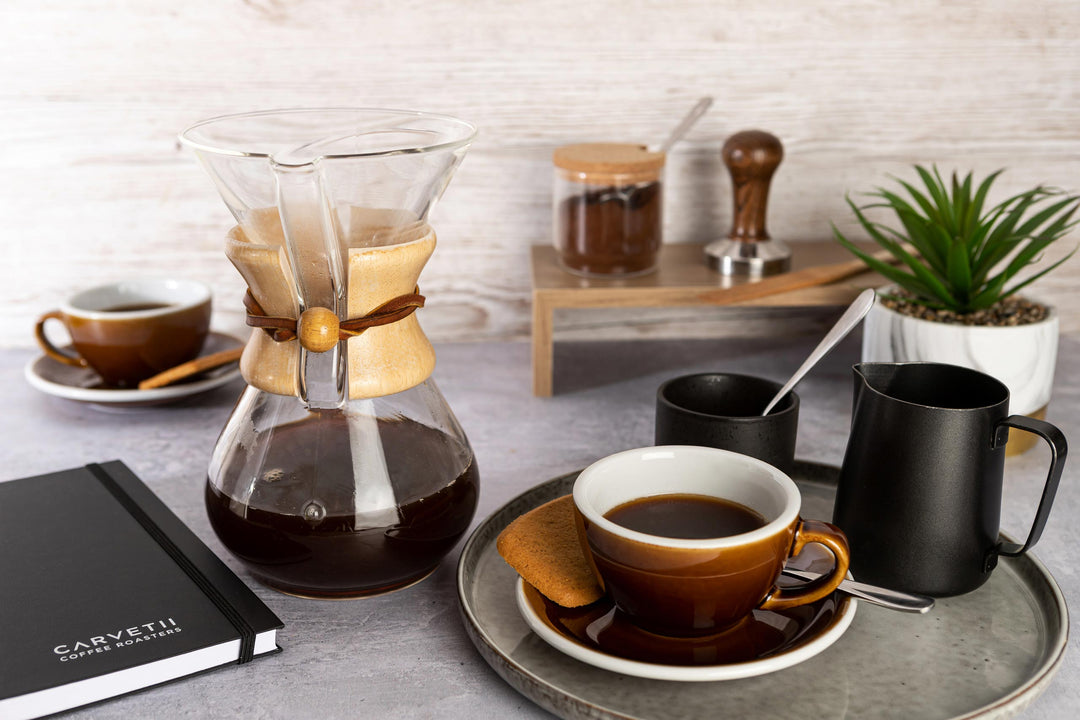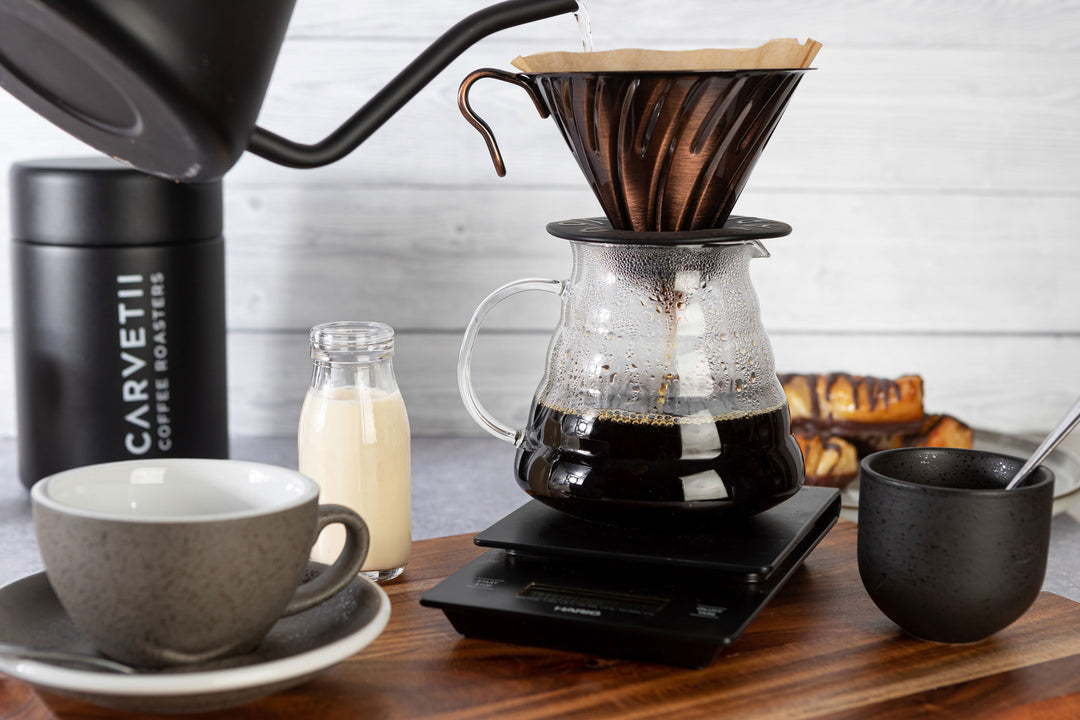Our Espresso Blend
Thank you for buying a bag of our coffee. We've put together a little bit of information which we hope you'll enjoy reading.
The components of our espresso come from two very different origins, Fazenda Passeio in Brazil and Koakaka in Rwanda. Each component brings a different characteristic to the coffee. The Fazenda Passeio has nutty and sesame seed flavours, while the underlying fruitiness comes from the Koakaka. We think this espresso is a lovely, sweet drink.

Fazenda Passeio is a 130 hectare farms in the Sul de Minas region of Brazil. The farm grows a number of different coffee varietals of which this lot includes Catuai and Mundo Novo. The coffee cherries (the beans are essentially the seeds of a cherry) are all hand picked to ensure only ripe cherries are harvested. The cherries are washed in water and then laid out on patios to dry with the sticky cherry mucilage still intact - this type of processing is called pulped natural. When they are dry the coffee is rested for 60 days before final milling. This particular lot was shipped from origin in October 2012.
Koakaka is the name of the processing mill which is owned by a cooperative of around 1,300 farmers. Each of these farmers owns around a quarter of a hectare and grows on average 250-300 coffee plants. The land is also used to grow subsistence crops. The cherries are also hand picked, and are then fully washed - they are soaked in water for longer and then the sticky mucilage is washed off. The beans are then dried on raised beds for around 14 days before final milling.

Fazenda Passeio works hard to look after its workers. Permanent workers and their families live on site, and are provided with schooling for their children, professional training, and environmental education. Koakaka is owned by its members and has grown from 867 members to 1316 in 2012, 297 of whom are women.

We roast each component of our espresso separately and then blend them together. We've used a ratio of two thirds Fazenda Passeio to one third Koakaka. Each bag of coffee is roasted to order and the beans are bagged as quickly as possible after roasting.
Coffee needs to de-gas for three of four days after roasting. There is a build-up of carbon dioxide in the bean during roasting and this is expelled slowly in the following days, hence the need for a valve on the bags. Our coffee will be at its best around 7-10 days after roasting and will remain at its peak for 14 days. We would always advise that our coffee is consumed within a month of the roasting date.

Coffee is best stored in its original bag. Oxygen will degrade coffee quickly so after each use, roll the bag up tightly and seal it with the tin ties. There is no need to store coffee in the fridge or freezer.
Finally, to really get the best from our coffee, grind just the amount you need each time you brew a cup.
Thank you for taking the time to read a little bit more about our espresso, please feel free to leave us any comments.
Angharad and Gareth


